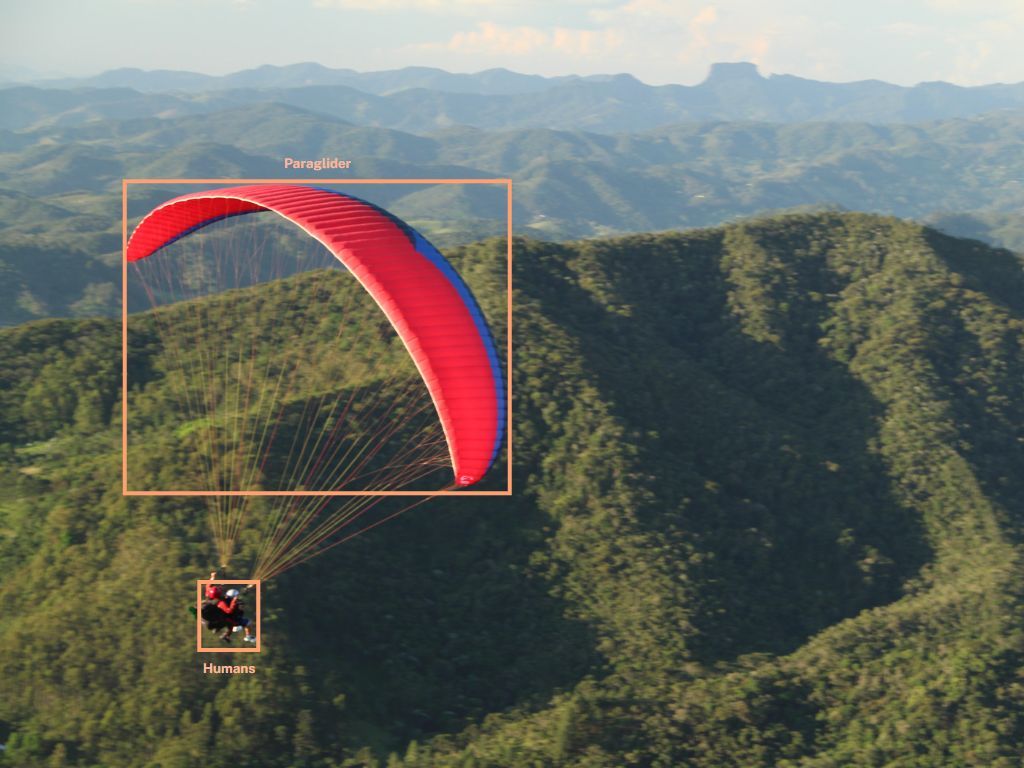A Paragliding Adventure & Three Types of Machine Learning

I woke up yesterday wondering if paragliding was going to happen. The last couple of times I texted my instructor to check, and it was a no-go even though the weather seemed fine to me, but hey, what do I know? I'm just an amateur. After two cancellations due to unfavourable conditions, I didn't have my hopes up. I was anticipating a response: "Unfortunately, today is not suitable for flying… we need to reschedule…". But to my surprise, the response was, "Yes, it's looking good at Stanwell".

The paragliding location is at a very scenic spot in Sydney called Stanwell Tops. It is a fair drive from where I live. On the way to Stanwell Tops, I wondered how machine learning can be applied to this thrilling sport of paragliding. So, in this blog post, I will cover the three types of machine learning in the context of paragliding. Along the way, I'll also share my tandem paragliding experience at Stanwell Tops in Sydney, Australia.
A little bit about Stanwell Tops before we dive into machine learning. Stanwell Tops is nestled along the stunning coastline of Sydney, Australia. It's a very picturesque location that captivates tourists' and locals' hearts. You get a panoramic view stretching out over the Pacific Ocean on one side and a lush, rolling hill and vibrant green forests on the other.
One of the most iconic features of the area is the Sea Cliff Bridge, a marvel of modern engineering that winds gracefully along the coast, hugging the contours of the headland. See if you can spot it in my video.
Ok, ready for the nerdy stuff? There are three primary types of machine learning: supervised, unsupervised, and reinforcement learning. Each of these approaches offers unique benefits and applications. I'll give you a rundown of these three types so you can get a feel for what they're all about.
Supervised Learning
Supervised learning is like having a knowledgeable friend showing you the ropes. It works by learning from labelled training data, which is a fancy way of saying it looks at examples with the right answers already included. The algorithm then finds patterns in this data and creates a model that can make predictions based on new, unseen data.
As I learn through this experience that weather is a major challenge for paragliding businesses. Its unpredictability makes planning difficult. Rapid weather changes, such as wind speed, storms, and wind direction, can impact safety and customer satisfaction. Businesses must monitor forecasts closely and adjust schedules as needed, often on short notice.
Supervised learning can be valuable here. You can create and train a model on historical data that includes weather variables like wind speed, wind direction, temperature, and flight outcomes.
With a trained model, businesses can input upcoming weather forecasts to predict which days and times have the most favourable conditions for paragliding. This will help them better plan their schedules, accommodating customers by offering flights during optimal weather windows.
There are two main flavours of supervised learning: classification and regression:
- Classification deals with categorical data, like figuring out whether an email is a spam or not, or determining if a picture is of a cat or dog.
- Regression, on the other hand, works with continuous data, like the paragliding example given above.
Supervised learning has tons of other applications, like in medical diagnosis, where algorithms can detect a disease from medical images, or in finance, where models can predict stock prices or assess credit risk.
Unsupervised Learning
Unsupervised learning is a type of machine learning where algorithms uncover hidden patterns and structures in data without any labelled examples to guide them. This approach is like exploratory detective work, where the algorithm sifts through data to find interesting and valuable insights. If one doesn't already exist, a potential application is using unsupervised learning to identify spots suitable for paragliding. Analyzing GPS logs and flight records can help discover popular and lesser-known launch and landing locations.
Some real-life applications of unsupervised learning include customer segmentation. Retailers and businesses use unsupervised learning techniques like clustering to segment customers into different groups based on their purchased behaviour, demographics, and preferences.
Recommendation systems are another example. By that, I mean systems that suggest movies or products.
Reinforcement Learning
Reinforcement learning is a type of machine learning where a computer program, often called an "agent", learns to make decisions by interacting with its surroundings. The agent gets feedback through rewards or penalties based on what it does, helping it figure out the best actions over time.
One of the most famous examples of reinforcement learning is AlphaGo. It is a computer program developed by DeepMind Technologies, a subsidiary of Alphabet Inc. (Google's parent company). It gained worldwide attention when it defeated a world champion Go player, Lee Sedol, in 2016. I remember watching the documentary a few years back. It left an indelible impression. Check it out if you haven't seen it; here is the link: AlphaGo - The Movie | Full award-winning.
During the training process, AlphaGo plays millions of games against itself, learning from its own actions and improving its performance over time. The reinforcement learning component allows AlphaGo to adapt its strategy based on the outcomes of its moves, enabling it to continue its gameplay and make better decisions.
So, there you have it- a glimpse into three types of machine learning with examples of how it can be applied to the exhilarating world of paragliding. Machine learning is absolutely revolutionary. I think it's an exciting time to dive into this field. I hope you enjoyed this blog. Until next time, ciao ~

